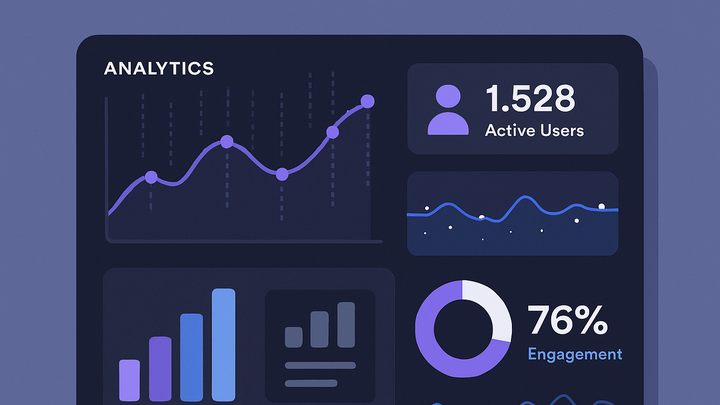Published on 2025-06-26T04:14:54Z
What is Real-time Reporting in Analytics? Examples with PlainSignal and GA4
In analytics, Real-time Reporting refers to the capability of capturing, processing, and displaying data as it happens. This approach provides up-to-the-second visibility into user actions, system performance, and marketing campaign results. Unlike traditional batch reporting, which introduces delays of hours or days, real-time reporting streams event data continuously, minimizing latency and enabling immediate responses. Modern platforms like PlainSignal—a cookie-free simple analytics solution—and Google Analytics 4 (GA4) both offer real-time dashboards, each with distinct features, integration methods, and data policies. This article explores the concept, benefits, implementation steps, and best practices for Real-time Reporting in contemporary analytics environments.
Real-time reporting
Real-time reporting delivers live analytics data instantly, enabling swift insights, immediate decision-making, and continuous monitoring.
Overview and Definition
Real-time reporting refers to the ability to capture, process, and display analytics data as events occur. It’s a crucial feature for teams who need up-to-the-second visibility into user interactions, system performance, or marketing campaign effectiveness. Unlike traditional reporting, which aggregates data in batches, real-time reporting streams event data continuously, minimizing latency. This section delves into the fundamental aspects of real-time reporting and how it differs from standard analytics approaches.
-
Definition
Real-time reporting is the continuous collection and display of data, showing metrics within moments of user actions or system events.
-
Key features
Real-time reporting platforms share several core features that enable live analytics. These features underpin fast decision-making and agile responses.
-
Low latency
Data appears in dashboards within seconds of occurring, reducing the delay between action and insight.
-
Continuous streaming
Events are ingested and processed in a continuous stream rather than in scheduled batches.
-
Live dashboards
Interactive visualizations update automatically to reflect the latest data.
-
Benefits of Real-time Reporting
Having immediate access to live data offers organizations significant advantages. From rapid troubleshooting to dynamic marketing adjustments, real-time reporting empowers a range of use cases. This section highlights the key benefits driving adoption.
-
Immediate decision-making
Teams can act on current information, such as optimizing campaigns or addressing website issues before they escalate.
-
Enhanced user experience
By monitoring user behavior in real time, product managers and designers can tweak interfaces and flows on the fly to improve engagement.
-
Proactive monitoring
Detect anomalies, performance bottlenecks, or fraud as they occur, enabling swift corrective actions.
Implementing Real-time Reporting
Setting up real-time reporting involves embedding tracking code, configuring dashboards, and selecting an analytics platform. Below are examples using PlainSignal and GA4.
-
PlainSignal
PlainSignal is a cookie-free, simple analytics tool offering real-time insights with minimal setup. To install, add their snippet to your site’s <head>. Example code:
-
Tracking code
<script defer data-do="yourwebsitedomain.com" data-id="0GQV1xmtzQQ" data-api="//eu.plainsignal.com" src="//cdn.plainsignal.com/plainsignal-min.js"></script>
-
-
Google analytics 4 (GA4)
GA4 offers a robust real-time view, integrated with Google’s broader ecosystem. To enable, ensure your gtag.js snippet includes your measurement ID and observe the Realtime report in the UI. Example code:
-
Gtag.js snippet
<script> window.dataLayer = window.dataLayer || []; function gtag(){dataLayer.push(arguments);} gtag('js', new Date()); gtag('config', 'GA-MEASUREMENT_ID'); </script>
-
Best Practices and Considerations
While real-time reporting is powerful, it’s important to implement it thoughtfully. This section covers best practices to ensure accuracy, performance, and compliance.
-
Data quality
Validate event tracking to prevent duplicate or missing data that can skew live metrics.
-
Performance impact
Monitor the overhead of continuous data collection on site performance and choose lightweight SDKs.
-
Privacy and compliance
Ensure real-time tracking aligns with privacy regulations; use cookie-free solutions or obtain user consent where required.
